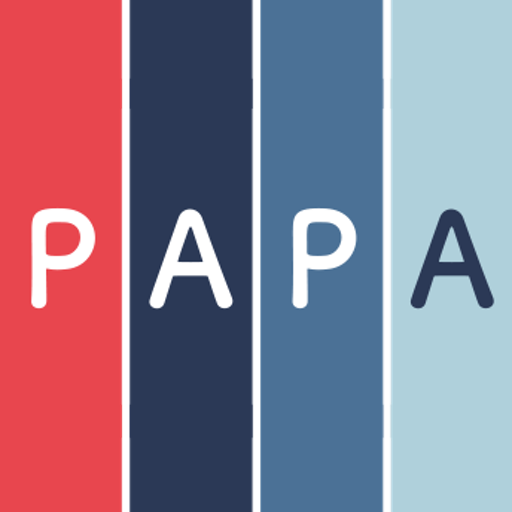9 Advantages of the LEI system in the fight against money laundering

As financial crimes become increasingly sophisticated, regulators and institutions face mounting challenges in their efforts to combat money laundering effectively. However, amidst this complex landscape, the Legal Entity Identifier (LEI) stands as a beacon of hope. Designed to provide a standardized and globally recognized identification system, the LEI offers a range of advantages that can bolster the fight against money laundering. In this article, we will delve into nine key advantages of the LEI, exploring how its implementation can fortify due diligence processes, enhance risk assessment capabilities, and foster greater collaboration among stakeholders.
The issue of money laundering (ML) and the financing of terrorism (TF), has recently acquired relevance, becoming truly international. This phenomenon not only harms the economic security and financial stability of a particular country but also makes it difficult to investigate and solve crimes and undermines the reputation of entities having the obligation to implement due diligence measures for the prevention of money laundering and terrorism financing and inform relevant authorities about suspicions or related cases.
What is money laundering?
First of all, let’s define what the “money laundering” is…
A common definition of money laundering
Money laundering is the process of obtaining the earnings from criminal activity and disguising their illegal sources to use the funds to carry out legal or illegal activities.
Simply put, money laundering is the process of turning “dirty money” into “clean money”.
The “money laundering” term is derived from the argot of criminals; in common words, it is a specific process of making illegally gained proceeds (i.e. “dirty money” or “black money”) appear legal (i.e. “clean” or “washed”) so that they can be used openly.
Criminals achieve this goal by hiding the source of funds, changing their shape, or moving money to a location where it is less likely to be found. Criminal activities that lead to money laundering (defined as predicate offenses) can include the illegal sale of weapons, drug trafficking, smuggling, and other activities related to organized crime, theft or misappropriation of funds, insider trading, bribery, and different fraud schemes.
Intergovernmental body (FATF)
The Financial Action Task Force on Money Laundering (FATF), founded in 1989, is an intergovernmental body that sets standards and supports international cooperation in the fight against money laundering. The group members are the G7 countries. One of the first achievements of the FATF was to refute the claim that money laundering concerns only cash transactions. Through several typology exercises, FATF experts have demonstrated that money laundering can occur through any channel, financial institution, or commercial company.
Definition of money laundering proposed by Palermo Convention
The UN Convention against Transnational Organized Crime from the year 2000, also known as the “Palermo Convention”, provides the following definitions of money laundering:
- the conversion or transfer of property, if such property is known to constitute proceeds of crime, to conceal or disguise the criminal source of that property, or to assist any person involved in the predicate offense so that he or she can evade responsibility for their actions;
- hiding or concealment of the true nature, source, location, method of disposal, movement, rights to property or its belonging, if it is known that such property is the proceeds of crime;
- the acquisition, possession, or use of property, if at the time of receipt, it is known that such property constitutes proceeds of crime.
Knowledge is an important precondition
Knowledge is an important precondition in defining money laundering. All of the above paragraphs contain the phrase: “if it is known that such property is the proceeds of crime”. In this case, the general concept of “knowledge” is interpreted rather broadly. According to the FATF 40 Recommendations on Anti-Money Laundering and the Financing of Terrorism and the 4th EU Directive on the Protection of the Financial System Against Money Laundering and the Financing of Terrorism, “the intent and the knowledge necessary to prove the crime of money laundering include the concept, according to which the conclusion about such a mental state can be deduced from objective facts”.
Intentional ignorance
A number of jurisdictions also use the legitimate principle of intentional ignorance in money laundering cases to prove the knowledge. In the courts, intentional ignorance is defined as “deliberate evasion of knowledge of the facts” or “purposeful indifference”. It has been established that intentional ignorance is the equivalent of real knowledge of an illegal financial source or the client’s intentions to carry out a money laundering operation.
Three steps of money laundering
According to FATF, typically, the process of money laundering involves three steps:
- Placement is the first step where illegitimate funds are furtively introduced into the legitimate financial system (Examples: cash top-ups).
- Layering is the second step where several transactions or complex financial schemes are performed to disguise the illegal source of the funds sometimes by transferring through numerous accounts.
- Integration is the third step where the illegal funds are integrated into the financial system through additional transactions and benefits from the illegal funds are acquired by the criminals. In practice, money laundering cases may not have all three stages, some of them could be combined, or several stages repeat several times. As stated by the Financial Crimes Enforcement Network (FinCEN), money laundering can facilitate crimes such as drug trafficking and terrorism and can adversely impact the global economy (FinCEN, 2021).
Thus, anti-money laundering (AML) is closely related to counter-financing of terrorism (CFT), and AML regulations combine money laundering (source of funds) with terrorism financing (destination of funds).
Why was LEI developed?
The 2012 Group of Twenty (G20) developed the LEI system in response to the inability of financial institutions to identify legal entities uniquely so that their financial transactions in different national jurisdictions could be fully tracked. Thus, the G20 endorsed the recommendations of the Financial Stability Board (FSB) regarding the framework for the development of a Global LEI system for parties to financial transactions and encouraged global adoption of the LEI to support authorities and market participants in identifying and managing financial risk. Since its introduction, the LEI has been adopted by millions of entities across more than 200 countries (ESRB, 2020, 403/2). The Regulatory Oversight Committee (ROC) is a group of public authorities from around the globe established in January 2013 to coordinate and oversee a worldwide framework of legal entity identification, the Global LEI System (GLEIF).

What is the LEI system?
To identify legal entities involved in financial transactions and other valued transactions between corporations or legal entities, a Legal Entity Identifier (LEI) global standard was designed and defined by ISO 17442, in the spirit of public and private partnership to improve transparency in the marketplace for entities and regulators alike and to collate financial transaction information into a freely accessible Global LEI System. In June 2012 at the Los Cabos Summit, the G20 Leaders endorsed the Financial Stability Board (FSB) report “A Global Legal Entity Identifier for Financial Markets”, and encouraged “global adoption of the LEI to support authorities and market participants in identifying and managing financial risks”. Regulated by the Regulatory Oversight Committee (ROC) through the Global Legal Entity Identifier Foundation (GLEIF), LEI is a 20-character identifier that represents a distinct legal entity engaged in financial transactions and the purpose of LEI is to be the single organization identity behind every business.
LEI Registration Agents
To streamline the process of issuing LEIs, GLEIF has introduced the concept of “Registration Agents”. The Registration Agent acts according to a license agreement with GLEIF, and facilitates the interaction of Clients (Legal Entities) with the network of organizations called Local Operating Units (LOUs) that issue LEIs and provide related services.
Legal Entities are required to notify the Registration Agent they served by, or LOU, of any changes to their Reference Data. The annual mandatory renewal process allows Clients and LOUs to re-verify and confirm the correctness of the submitted Reference Data. This ensures the high quality of the data in the Global LEI database and thus the credibility of the Global LEI System.
What does the LEI code specify?
The LEI code specifies the minimum reference data, which must be supplied for each LEI, such as the official name of the legal entity as recorded in the official registers, the registered address of that legal entity, the country of formation, the codes for the representation of names of countries and their subdivisions. The information stating the date of the first LEI assignment, the date of the last update of the LEI information, and the date of expiry (when applicable) is also stored in the global database.

Moreover, each LEI contains information about an entity’s ownership structure (direct and ultimate parent entities) and therefore answers the questions of “who is who” and “who owns whom” for each particular entity. Every single LEI code is unique and shall be issued only once for a specific legal entity; the same LEI code cannot be issued to another legal entity. The LEI code does not replace the registry code (registration number of the entity) of the commercial register, which is still used to identify a legal entity.
LEI codes associate legal entities with key information, which allows them to participate in global financial markets to be clearly and uniquely identified and are already used to identify the parties to EMIR derivative instruments transactions and due to the application of implementing regulation EU/2017/105, no other alternative codes can be used when providing notification of transactions made with derivative instruments starting from 1 November 2017.
Moreover, LEI codes are used for reporting as of 3 January 2018. Under the MiFIR and MiFID II regulations, transaction reports shall, among other things, also be used for investigating market abuse. The total amount of LEI codes issued worldwide by February 2024 corresponds to more than two million codes.
How the LEI can help to avoid money laundering?
The main purpose of the LEI system is to improve transparency and reduce risk in the financial system. Here are the 9 advantages of the LEI system in the fight against money laundering:
- Improved Transparency: By having a unique identifier for every legal entity involved in a financial transaction, it becomes much easier to track and trace the parties involved. This makes it more challenging for entities to hide their true identity or their involvement in a series of transactions.
- Enhanced Due Diligence: Financial institutions can use the LEI as part of their customer due diligence processes to ensure they know who they’re dealing with. This could help in verifying the authenticity of the involved entities.
- Data Consistency and Accuracy: The LEI database is maintained by the Global Legal Entity Identifier Foundation (GLEIF). This ensures that data related to an entity is accurate, up-to-date, and consistent across various platforms. Such uniform data reduces the chances of mistakes or misidentification, which could be exploited for money laundering.
- Cross-border Recognition: The LEI system is recognized and used globally, making it easier to track international transactions. Money laundering often involves moving funds across borders to obscure their origins. A globally recognized identification system helps in tracing such funds.
- Monitoring and Reporting: Regulatory authorities can more easily monitor and report suspicious activities when entities are clearly identified by their LEI. This can lead to quicker detection of unusual patterns indicative of money laundering.
- Integrating with Other Systems: The LEI can be integrated with other financial and regulatory databases or systems to create a more comprehensive picture of financial activities. This makes it more challenging for criminals to find gaps or loopholes that they might exploit.
- Reputation and Trust: Entities that have an LEI demonstrate a commitment to transparency and compliance. Those involved in illicit activities might be less likely to use an identification system that could expose them, making it harder for them to operate in the mainstream financial system.
- Streamlined Compliance: For institutions that are mandated to report to regulatory bodies, having a standardized identification system means less ambiguity and a more streamlined reporting process. This can lead to quicker detection and action against money laundering activities.
- Building a Network: As more and more entities adopt the LEI system, a more connected network of legal entities is formed. This interconnectivity makes the financial ecosystem more transparent and harder for money launderers to navigate without detection.
While the LEI system offers several advantages in the fight against money laundering, it’s just one tool in a larger toolbox. For it to be truly effective, it must be combined with other measures, including robust internal controls, continuous monitoring, and international cooperation.
LEIpapa encourages entities to register an LEI to not only comply with global financial standards but also to contribute to a more secure and transparent financial ecosystem.
FAQ
What is Group of Seven (G7)?
What is G20 Group of Twenty 2012?
More info on G20 Group of Twenty…
Who needs an LEI?
More info…
Who can apply for an LEI?
More info…
Who may NOT apply for an LEI?
An LEI may not be requested by any of the following:
- Individuals;
- Unregistered businesses and entities;
- Operating divisions;
- Branch offices within the same country as a head office with an existing registered LEI.
More info…
How to search LEI codes?
More info…

